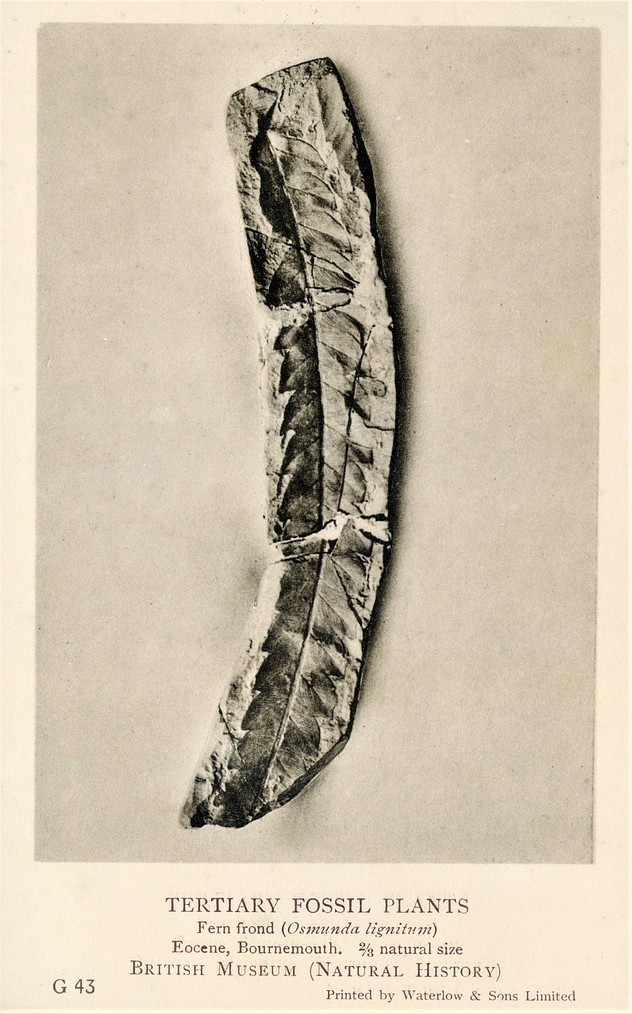BETA TEST - Fossil data and pages are very much experimental and under development. Please report any problems
 Osmundales
Osmundales
| Description | The Osmundaceae (royal fern family) is a family of four to six extant genera and 18–25 known species. It is the only fern family of the order Osmundales an order in the class Polypodiopsida (ferns) or in some classifications the only order in the class Osmundopsida. This is an ancient (known from the Upper Permian) and fairly isolated group that is often known as the "flowering ferns" because of the striking aspect of the ripe sporangia in Claytosmunda, Osmunda, Osmundastrum, and Plensium (subtribe Osmundinae). In these genera the sporangia are borne naked on non-laminar pinnules, while Todea and Leptopteris (subtribe Todinae) bear sporangia naked on laminar pinnules. Ferns in this family are larger than most other ferns. From Wikipedia article at https://en.wikipedia.org/wiki/Osmundales, which is released under the Creative Commons Attribution-Share-Alike License 3.0. | |||||||||||||||||||||
|---|---|---|---|---|---|---|---|---|---|---|---|---|---|---|---|---|---|---|---|---|---|---|
| Source Data |
| |||||||||||||||||||||
| Rank | order | |||||||||||||||||||||
| Taxonomy (GBIF) | Life : Plantae : Tracheophyta : Polypodiopsida : Osmundales | |||||||||||||||||||||
| Taxonomy (PBDB) | Life : Plantae : Pteridophyta : Pteridopsida : Osmundales | |||||||||||||||||||||
| Taxonomic Status (GBIF) | accepted | |||||||||||||||||||||
| Classification (PBDB,GBIF) |
| |||||||||||||||||||||
| Scientific Name | Osmundales | |||||||||||||||||||||
| Opinions (PBDB) |
| |||||||||||||||||||||
| Status (PBDB) | extant | |||||||||||||||||||||
| Taxon Size (PBDB) | 30 | |||||||||||||||||||||
| Extant Size (PBDB) | 3 (10%) | |||||||||||||||||||||
| First Recorded Appearance | 272 - 269 Ma Permian | |||||||||||||||||||||
| Primary Reference (PBDB) | N. A. Jud. 2011. Unpublished taxonomic opinions. | |||||||||||||||||||||
| Common Name(s) | Safsaordningen | |||||||||||||||||||||
| Wikipedia | https://en.wikipedia.org/wiki/Osmundales |
External Images
Fossil Distribution
Subtaxa
| Name | Status | Common Name(s) | Fossil Occurrences | Oldest | Youngest |
|---|---|---|---|---|---|
| Guaireaceae family | accepted (GBIF) | No associated record in PBDB | |||
family | accepted (GBIF) listed (PBDB) | 515 | 272 Ma Permian | 0 Ma Extant | |
References
Data courtesy of: PBDB: The Paleobiology Database, Creative Commons CC-BY licenced. , GBIF: the Global Biodiversity Information Facility, various licences, iDigBio, various licences, and EOL: The Encyclopedia of Life (Open Data Public Domain). Because fossils are made of minerals too!










Bournemouth, Bournemouth, Christchurch and Poole, England, UK